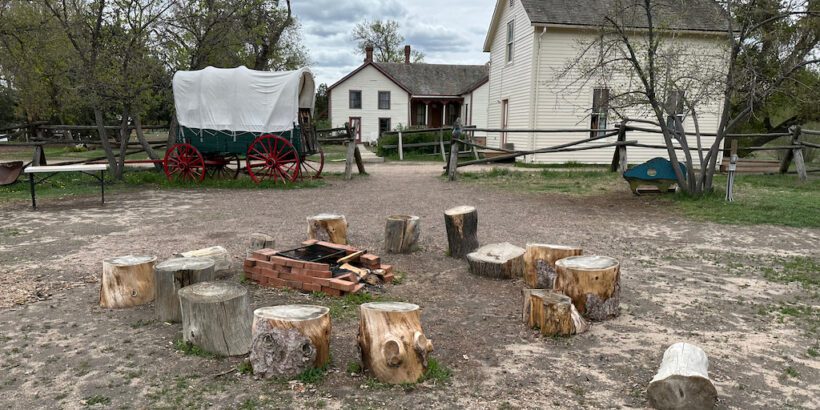Denver has a long and rich history with pioneer culture and one of the best places to experience this is at the Four Mile Historic Park.
Not only will its historical architecture and living history farm take you back to the pioneer era, but the park is also home to a famous Denver landmark known as the “Four Mile House.”
If you’re planning on taking a visit to the Four Mile Historic Park be sure to check out this article to find out more about these historical sites.
Table of Contents
What is Four Mile Historic Park?
Four Mile Historic Park is a 12-acre park located in Denver, Colorado, that is home to the Four Mile House, the oldest standing structure in Denver.
The park also features remarkably detailed recreated pioneer structures, a barn with farm animals, a variety of educational exhibits, and they also host many special events that take place throughout the year.
Related: Littleton Museum Review: An Immersive Living History Experience
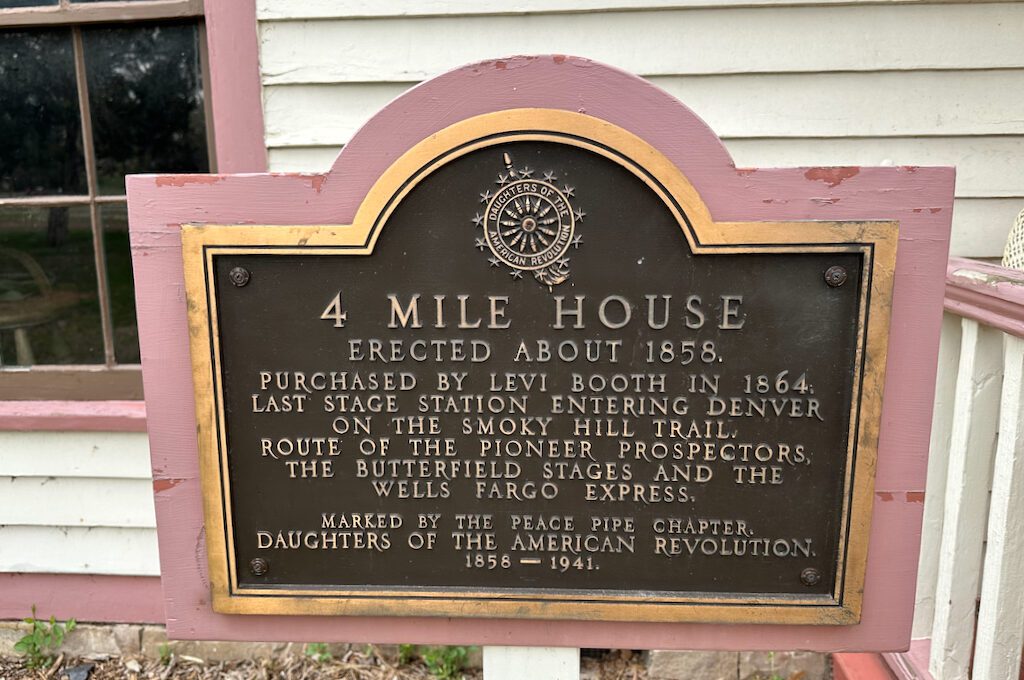
How to get to Four Mile Historic Park
Four Mile Historic Park is located at 715 South Forest Street in Denver, Colorado. The park open days differ based on when you visit and here are the hours:
- January to May:
- Friday – Sunday: 10:00am – 4:00pm
- June to December:
- Wednesday – Sunday: 10:00am – 4:00pm
Admission fees are:
- Adult: $8.00
- Youth (age 7-17): $6.00
- Child (age 0-6): $0.00
- Senior (age 65+): $7.00
- Military (with ID): $7.00
There is a partially paved parking lot with quite a few spaces that you can use and you’ll be happy to know parking is free. When we visited on a late Saturday morning, there were plenty of open spots for us but during special events, the spaces may not be as widely available.
To be taken directly to the parking lot, enter the following address into your navigation: 4846 E Exposition Ave, Glendale, CO 80246.
Note: UponArriving is not affiliated with Four Mile Historic Park
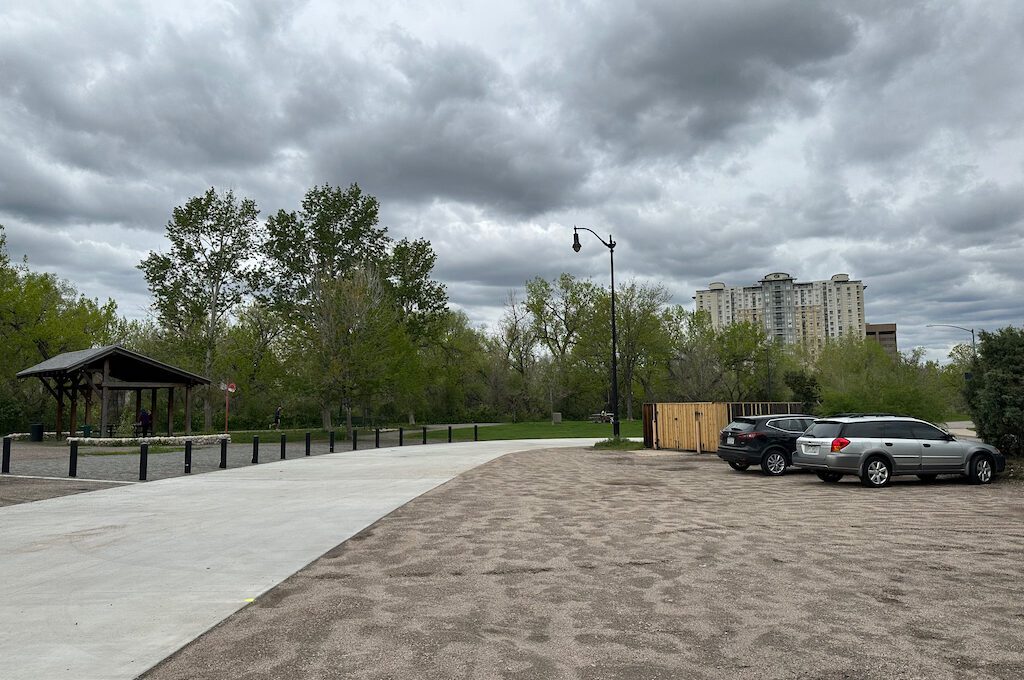
Experiencing Four Mile Historic Park
Your experience will begin when you enter the Grant Family Education Center, where you can purchase tickets or scan your QR code from your previously purchased tickets. (Groups of students on trips will enter through a different entrance.)
If you have any interest in touring the Four Mile House — which I highly recommend — you can inquire with the agent working the desk about the next available tour. In our case, we only had to wait about 20 minutes, which wasn’t bad.
The major highlight of Four Mile Historic Park is without a doubt the historic Four Mile House.
During a guided tour, you have the opportunity to leisurely wander through the various rooms and levels of the house, marveling at the exquisitely maintained interior and exploring appliances and furniture from the 1800s.
Our guide, both knowledgeable and engaging, ensured that our experience was thoroughly enjoyable, allowing us to indulge our curiosity. Prepare to be pleasantly surprised by how effortlessly the tour transports you to a bygone era.
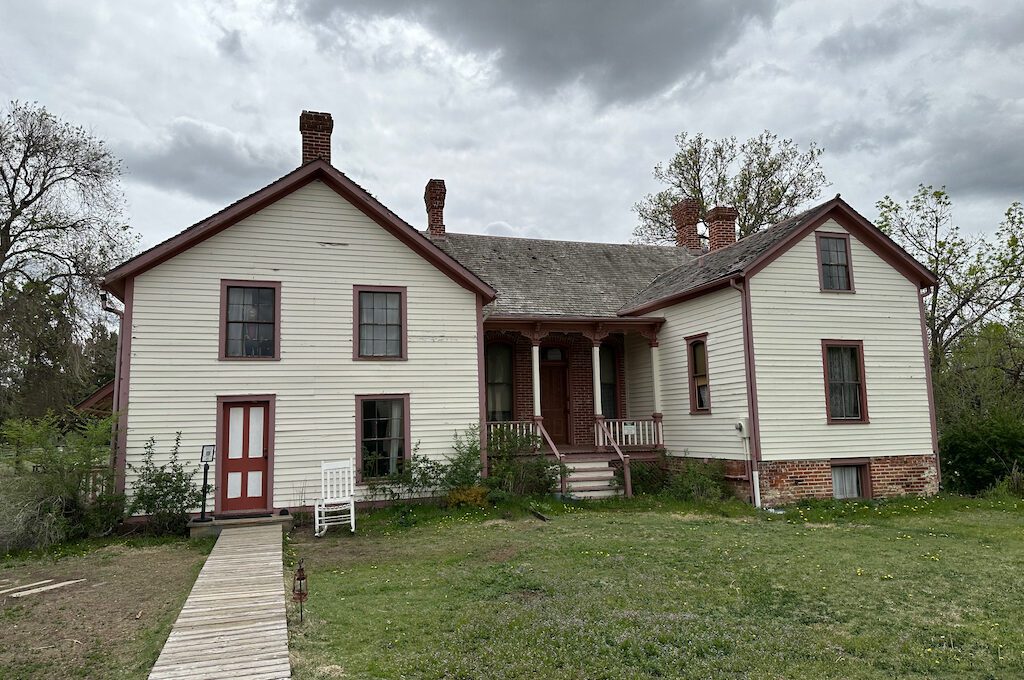
The Four Mile House was built in 1859 by brothers Samuel and Jonas Brantner.
Initially, the house was used as a stagecoach stop and a trading post. In fact, it was the last stopping point before pioneers made their way to Denver, located about 4 miles away, hence the name.
The house was built along the Cherokee Trail but also where other trails converged such as the Smoky Hill Trail, a major pioneer trail that ran close to 600 miles from Atchison, Kansas, to Denver, Colorado.
Back in 1858, gold fever hit Denver like a wild bronco.
Prospectors, called “Fifty-Niners,” stampeded to the area for the Pike’s Peak Gold Rush, desperate to strike it rich. They used the The Smoky Hill Trail to arrive in Colorado from Kansas, allowing them to save one to two weeks of travel time.
But it wasn’t an easy journey as the trail was known for being rather treacherous.
It was notorious for its navigation difficulties and a whole host of dangers, including dehydration, surprise attacks from Native Americans like the Cheyenne and Arapaho, and nasty illnesses like cholera. And if that wasn’t enough, the unforgiving climate meant battling scorching heat in the summer and bone-chilling blizzards in winter.
Luckily, for travelers who survived the journey, the 4 mile house provided a welcome oasis where they could replenish their energy and enjoy a range of comforts.
They could indulge in a satisfying meal, find lodging to rest their weary bodies, repair equipment, change horses, and stock up on essential supplies for the rest of their travels.
The lively upstairs atmosphere of the 4 Mile House might even have enticed them to partake in a bit of dancing, allowing them to unwind and let loose after enduring the challenges of the long journey.
The Smoky Hill Trail was used regularly until the the Denver Pacific and Kansas Pacific Railroads reached Denver in 1870, quickly making travel by stage coach obsolete.
Around that time, the owners pivoted to ranching and farming, which they would operate for many decades to come. Their acreage expanded while they also added a new brick addition to the house which modernized the structure in the 1880s.
(When you explore the interior of the house, you’ll see the stark contrast between the Victorian interior and the old log house.)
The ownership of the house would subsequently change hands, eventually falling under the jurisdiction of the city of Denver. In 1969, this storied dwelling found its rightful place on the esteemed National Register of Historic Places.
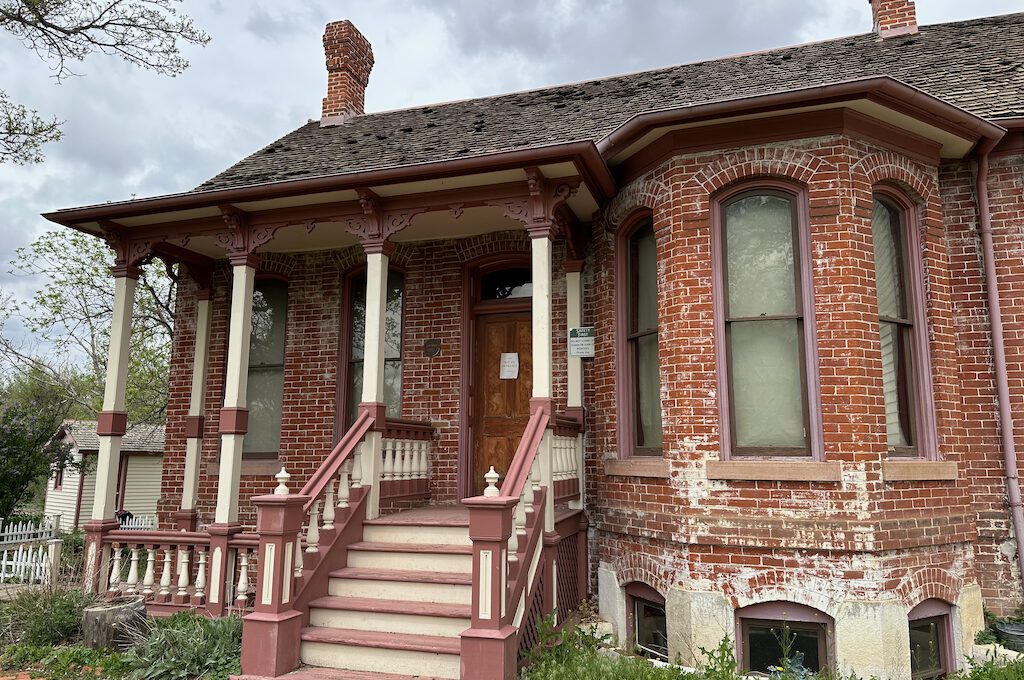
To get an idea of what a typical family would use to travel west, be sure to visit the covered wagon nearby.
I was surprised to learn that the wagons were usually packed so full of belongings and supplies that the family had to walk behind the wagon, traveling about 7 to 10 miles per day. Typically, they would travel in caravans due to having safety in numbers.
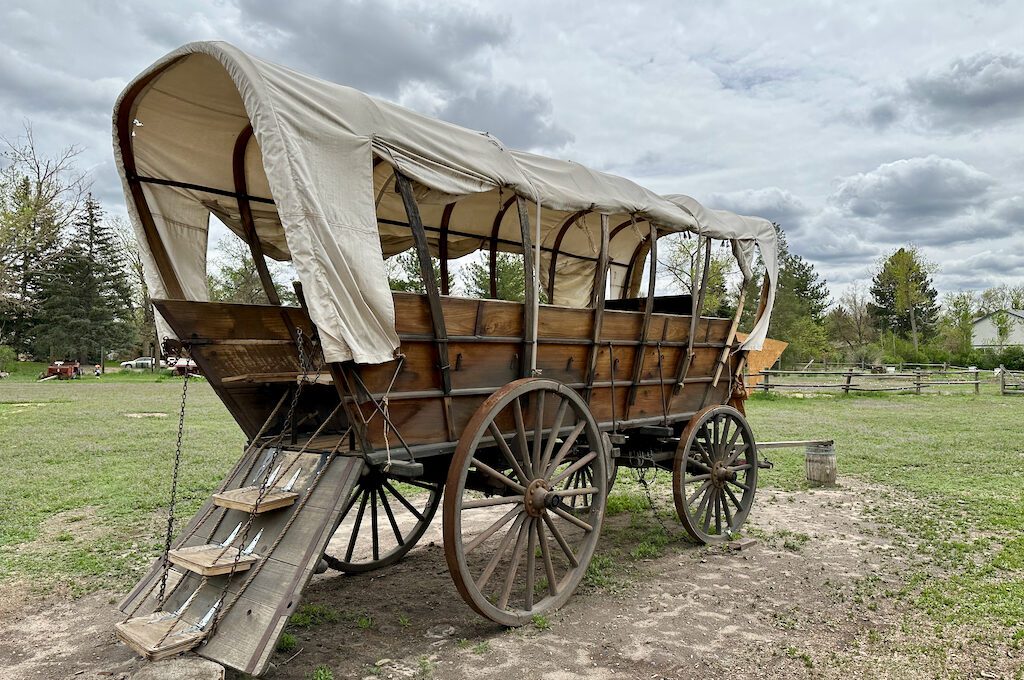
Beside the Four Mile House is the “Bee House,” which was once home to Millie Booth’s honey-making operation. Millie had around 120 beehives, and she used the Bee House to process and can her honey. The original structure was built in 1866, but it burned down in 1941.
Luckily, the Bee House was rebuilt in 1980 and is now used as a one-room schoolhouse, which you can go inside of and explore. And if you’re a fan of honey comb, you can even buy some from the gift shop!
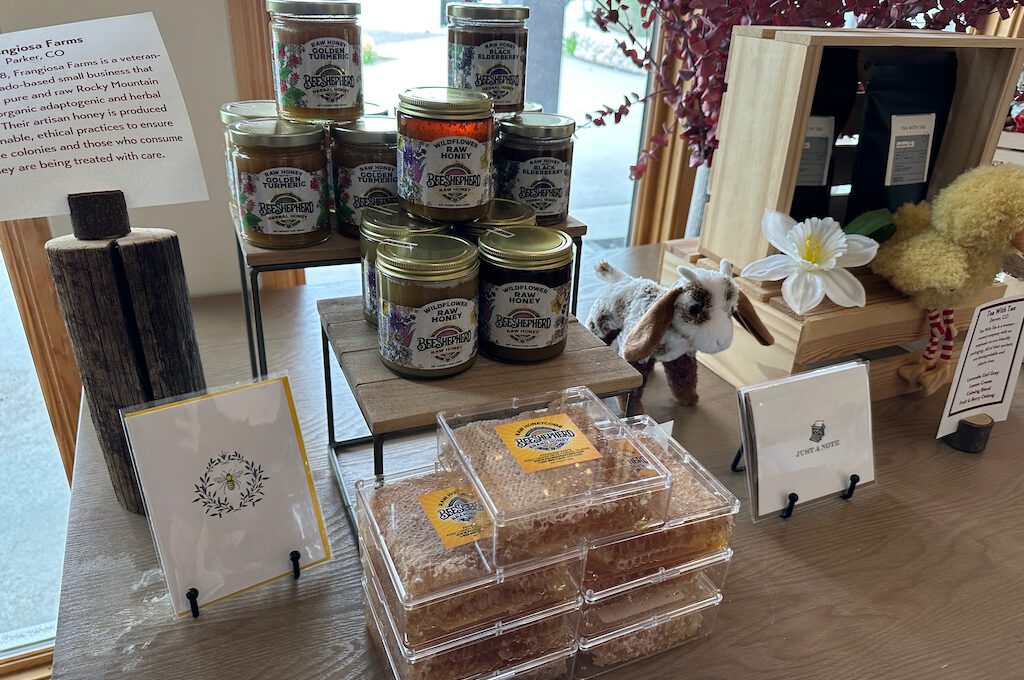
Nearby, you can find the chicken coop and even have your hand at feeding the chickens with the feed machine located by the coop. Head over to the livestock area where you can find horses, goats, and even pigs.
You can pet these animals but it’s best to keep your hands away from their mouth because they can bite even if it is accidental. They also ask that you don’t feed these animals.
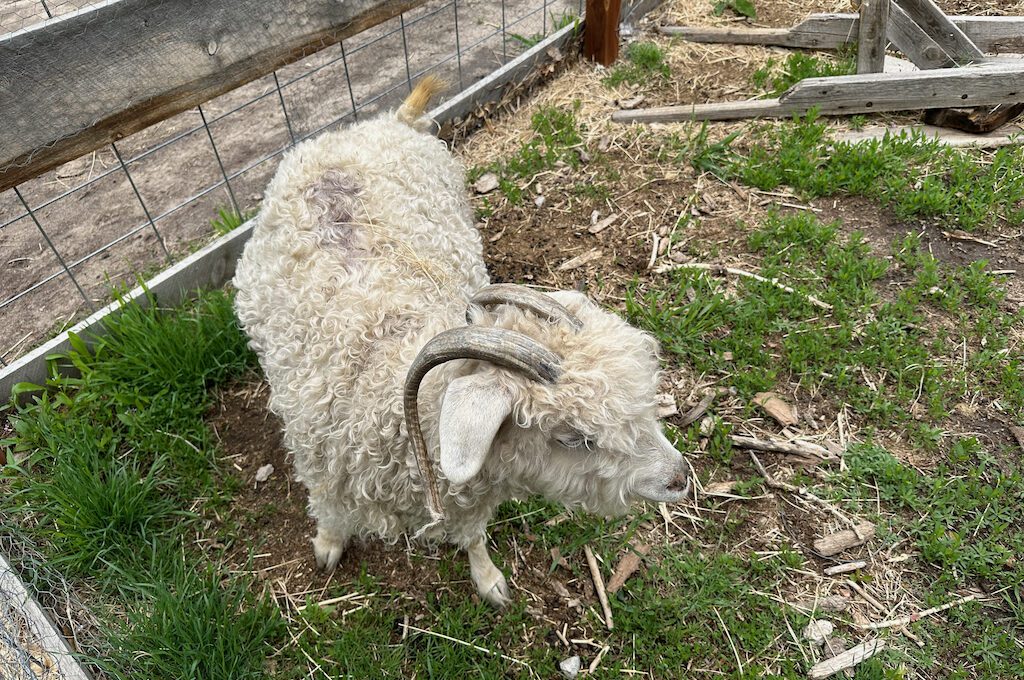
Don’t miss the barn housing a stage coach and the blacksmith shop, another one of the major highlights of the park. It’s a fully functional shop equipped with an 1800 forge blower that was state of the art for its time.
Take a peek inside and be transported back over 150 years ago to a time when the rhythmic clang of hammers echoed and mesmerizing glows of molten metal illuminated skilled craftsmen.
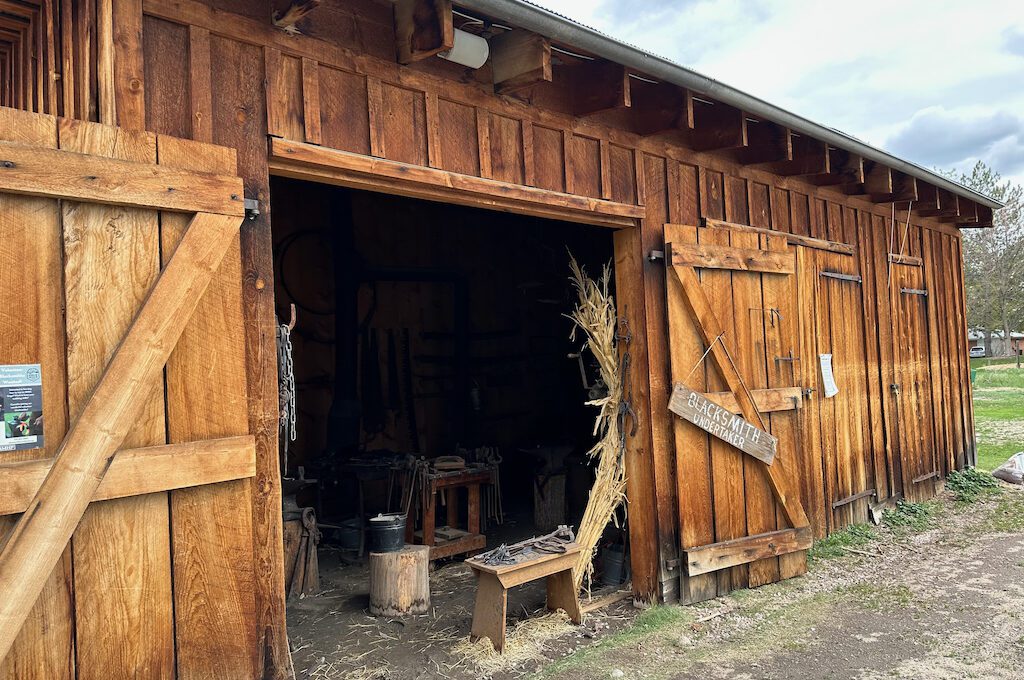
And finally, If you’re wondering how pioneers lived in the 1800s, be sure to visit the replica cabin, which will give you a good idea of how both fur trappers and miners lived amidst the rugged wilderness. This type of abode would have been used by a mountain-dwelling family, perhaps working for a wage under one of the major mining companies.
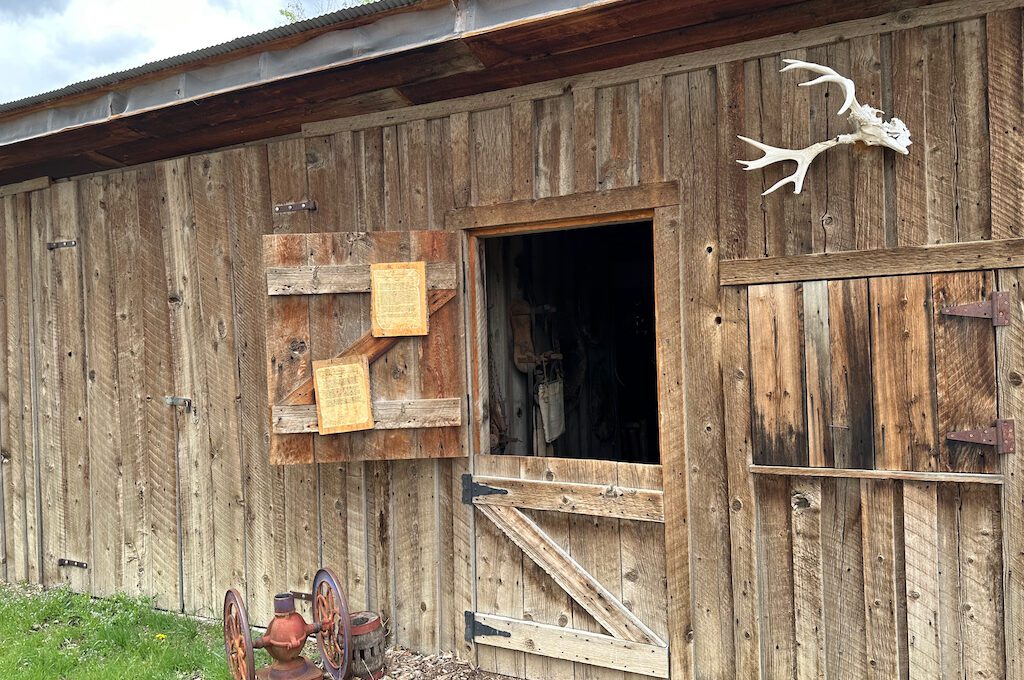
There are some other interesting sites to check out at the park but I’ll let you discover those first hand!
Donations
If you’d like to further support the museum, consider giving a small donation to show your appreciation. If you’d like to donate, you can do that here on their official website.
Final word
Four Mile Historic Park give you the unique opportunity to explore a structure that once served weary travelers approaching the city of Denver after being on the trails for hundreds of miles. Beyond being able to step foot in the oldest surviving building in Denver, it’s fascinating to think about the stories and moments that took place in this old tavern and lodge.
Daniel Gillaspia is the Founder of UponArriving.com and the credit card app, WalletFlo. He is a former attorney turned travel expert covering destinations along with TSA, airline, and hotel policies. Since 2014, his content has been featured in publications such as National Geographic, Smithsonian Magazine, and CNBC. Read my bio.

